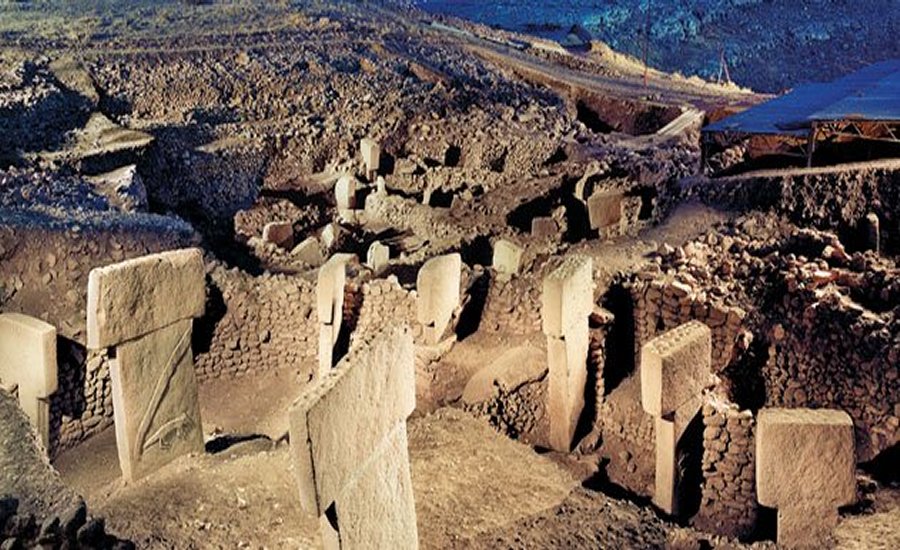MessageToEagle.com – While examining ancient astronomical symbols, scientists found evidence that confirm a comet swarm struck the Earth around 11,000 B.C.
During this event, many large animal species were killed and a mini Ice Age was triggered.
Composed of carved megaliths and Stone Age temples Göbekli Tepe in southern Turkey is one of the world’s most important archaeological sites in the world.
Excavations at Göbekli Tepe began in 1995 and there is proof pictograms at the site may represent commonly understood sacred symbols, as known from Neolithic cave paintings elsewhere.

Dr. Martin Sweatman from University of Edinburgh’s School of Engineering thinks Göbekli Tepe, which is 6,000 years older than Stonehenge was once an ancient astronomical observatory. While studying symbols carved into the temple’s pillar known as the vulture stone, he and his team found evidence the ancient depictions of animals correlate with constellations and astronomical alignments associated with a comet strike.
Researchers dated the event to 10,950BC.
The dating from the carvings agrees well with timing derived from an ice core from Greenland, which pinpoints the event – probably resulting from the break-up of a giant comet in the inner solar system – to 10,890BC.
“It appears Göbekli Tepe was, among other things, an observatory for monitoring the night sky. One of its pillars seems to have served as a memorial to this devastating event – probably the worst day in history since the end of the ice age,” Dr. Sweatman said.
See also:
Mysterious Ancient T-Shaped Stones Tell Story Of Göbekli Tepe
Ancient Babylonian Astronomical Records Confirm Slowing Of Earth’s Spin
The carvings appear to have remained important to the people of Gobekli Tepe for millennia, suggesting that the event and cold climate that followed likely had a very serious impact.
Scientists suggest the images were intended as a record of the cataclysmic event, and that a further carving showing a headless man may indicate human disaster and extensive loss of life.
The mini-Ice Age is a significant even in the history of our planet because it was during this period that the first agricultural Neolithic civilizations were established, a result of harsh climate conditions.
Climate change forces our ancestors to band together into tight communities that relied on farming, irrigation and the domestication of animals to survive.
The find also supports a theory that Earth is likely to experience periods when comet strikes are more likely, owing to Earth’s orbit intersecting orbiting rings of comet fragments in space.
“I think this research, along with the recent finding of a widespread platinum anomaly across the North American continent virtually seal the case in favor of (a Younger Dryas comet impact),” Dr. Sweatman said.
Scientists have also suggested that an early form of writing, and carvings depicting a headless man found at the site could be evidence of large loss of life following the comet strike.
Our ancestors wanted us to remember how celestial objects changed life on Earth and there are many carvings as well as legends world-wide that tell a similar story.
Aboriginal legends for example, tell millennia-old stories of events in the sky. Dr Duane Hamacher from the UNSW Indigenous Astronomy Group has uncovered evidence linking Aboriginal stories about meteor events with impact craters dating back some 4,700 years.
MessageToEagle.com
Expand for references







